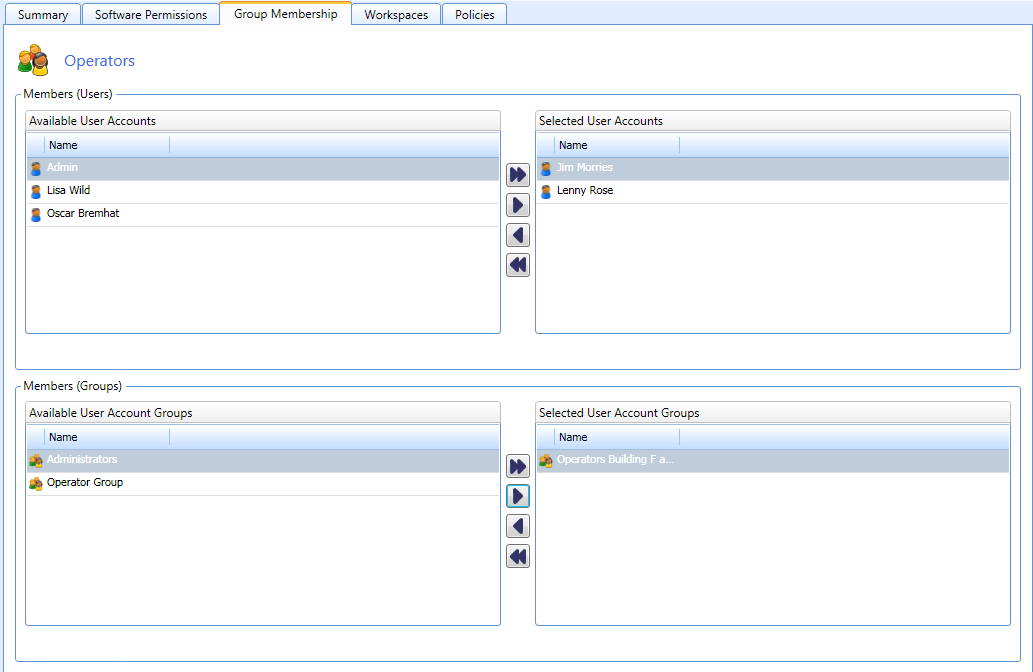Log on to rate and give feedback
1
2
3
4
5
Log on to rate
0

How to
Products:
Automation Server, AS-B, Enterprise Server, AS-P, Virtual Project Servers
Functionalities:
User Management
Product version:
1.9
12/14/2016
Removing a User Account Group from another User Account Group
You remove a user account group from a user account group, for example, if the user account group does not anymore meet the required software permission.
To remove a user account group from another user account group
In WorkStation, on the Tools menu, click Control Panel .
On the Control Panel toolbar, select the SmartStruxure server.
action_zoom_plus_stroke 
Click Account management .
In the Domain list, select the domain the user account group belongs to.
action_zoom_plus_stroke 
In the User Account Groups list, select the user account group.
Click Group membership .
In the Selected User Account Groups list, select the user account group you are removing the user account group from and click the Remove button
.action_zoom_plus_stroke 
action_zoom_plus_stroke 
Click the Save button
.action_zoom_plus_stroke 
 User Account Group – Group Membership Tab
User Account Group – Group Membership Tab
 Adding a User Account Group to a User Account Group
Adding a User Account Group to a User Account Group
 User Accounts and User Account Groups
User Accounts and User Account Groups
